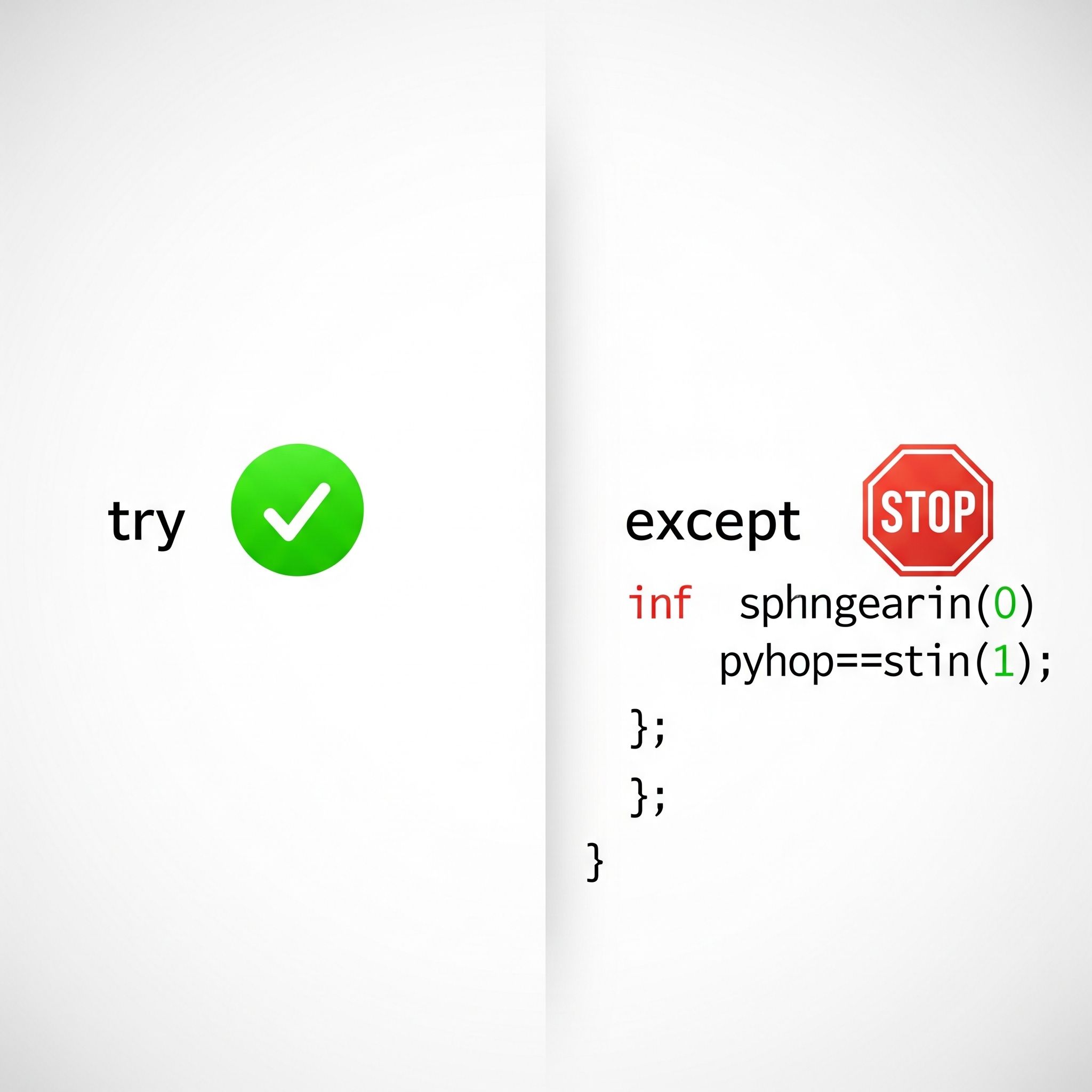Building a Bulletproof App: Essential API Error Handling with the CarsXE Python Package

As a developer, you know that the "happy path"—the perfect, successful flow of a program—is only half the story. A truly robust application is one that anticipates and gracefully handles the "unhappy paths": a user enters invalid data, a network connection is lost, or an API key is incorrect.
When working with external services like the CarsXE API, proper error handling is not a luxury; it's a necessity. It prevents your application from crashing, provides useful feedback to your users, and helps you debug issues faster.
This guide will walk you through the essential techniques for building a bulletproof application by handling common API errors with the official CarsXE Python package.
The Golden Rule of API Calls: try...except
In Python, the try...except block is your primary tool for anticipating and handling errors. The code inside the try block is where you place the operation that might fail, and the code inside the except block is your safety net, which runs only if an error occurs.
Here’s the basic structure:
Python
from carsxe_api import CarsXE
API_KEY = 'YOUR_API_KEY'
carsxe = CarsXE(API_KEY)
try:
# This is the code that might fail
response = carsxe.specs({"vin": "WBAFR7C57CC811956"})
print("Success! Vehicle data found.")
# You can now process the successful response
print(f"Make: {response['vin']['make']}")
except Exception as e:
# This code runs only if an error occurs in the 'try' block
print(f"An error occurred: {e}")
While this basic structure is a great starting point, a professional application needs to be more specific. Different errors require different responses.
Handling Specific Errors: A Professional Approach
API errors typically fall into two categories:
- Client Errors (4xx): These are on you, the developer. They indicate something is wrong with the request itself.
- Server Errors (5xx): These are on the API provider. They indicate a problem on the server side that is usually temporary.
The CarsXE Python package is designed to raise specific exceptions for these scenarios, allowing you to handle them with precision.
Error 1: Bad Request (400) - The Invalid VIN
This is the most common error you'll encounter. It means the data you sent is invalid. For a VIN API, this could be an invalid VIN format, a typo, or a non-existent VIN.
How to Handle: The carsxe-api package returns a clear JSON response for these errors.
Python
from carsxe_api import CarsXE
from carsxe_api.errors import APIError
API_KEY = 'YOUR_API_KEY'
carsxe = CarsXE(API_KEY)
try:
# This VIN has a deliberate typo
response = carsxe.specs({"vin": "BADV1N"})
# This code will not be reached
except APIError as e:
# The package raises a specific APIError for 4xx and 5xx responses
print("Client Error: The request was invalid.")
print(f"Status Code: {e.status_code}")
print(f"Error Message: {e.message}")
# Example output:
# Client Error: The request was invalid.
# Status Code: 400
# Error Message: "Invalid VIN"
The APIError object gives you access to the HTTP status code and the detailed error message returned by the API, allowing you to provide specific feedback to your users.
Error 2: Authentication Errors (401 & 403) - The Bad API Key
This happens when your API key is missing, invalid, or doesn't have permission for the requested endpoint.
How to Handle: This is a critical error, as your application cannot function without proper authentication.
Python
from carsxe_api import CarsXE
from carsxe_api.errors import APIError
API_KEY = 'INVALID_API_KEY' # An invalid key will trigger this error
carsxe = CarsXE(API_KEY)
try:
response = carsxe.specs({"vin": "WBAFR7C57CC811956"})
except APIError as e:
if e.status_code == 401 or e.status_code == 403:
print("Authentication Error: Please check your API key and permissions.")
print("Ensure your account is active and the key is correct.")
else:
# Handle other API errors
print(f"An unexpected API error occurred: {e.status_code}")
This specific handling allows you to provide a tailored message to the user, guiding them to fix the problem themselves.
Error 3: Rate Limiting (429) - Too Many Requests
Most APIs have limits to prevent abuse. If you make too many requests in a short period, the server will tell you to slow down.
How to Handle: A professional application implements a retry mechanism with exponential backoff. This means you wait for an increasing amount of time before retrying the request.
Python
import time
from carsxe_api import CarsXE
from carsxe_api.errors import APIError
API_KEY = 'YOUR_API_KEY'
carsxe = CarsXE(API_KEY)
retries = 3
wait_time = 1 # seconds
for attempt in range(retries):
try:
response = carsxe.specs({"vin": "WBAFR7C57CC811956"})
print(f"Success on attempt {attempt + 1}")
break # Exit the loop on success
except APIError as e:
if e.status_code == 429 and attempt < retries - 1:
print(f"Rate limit hit. Retrying in {wait_time}s...")
time.sleep(wait_time)
wait_time *= 2 # Exponential backoff
else:
print(f"Failed after {attempt + 1} attempts: {e.message}")
break # Or handle the final failure
This is a robust pattern that keeps your application from crashing and makes it resilient to temporary server issues.
The Full Pattern: try...except...else...finally
For a complete and professional approach, you can use all the clauses of the try block.
try: The code to run.except: The code to run if an error occurs.else: The code to run ONLY if no errors occur in thetryblock.finally: The code that ALWAYS runs, whether there was an error or not.
This is perfect for cleanup tasks, like closing a log file or a database connection.
By mastering these essential error handling techniques, you're not just a developer—you're an architect of robust, reliable, and user-friendly applications. The CarsXE Python package is built to make this process as clear as possible, so you can focus on building amazing things, confident that your application is bulletproof.